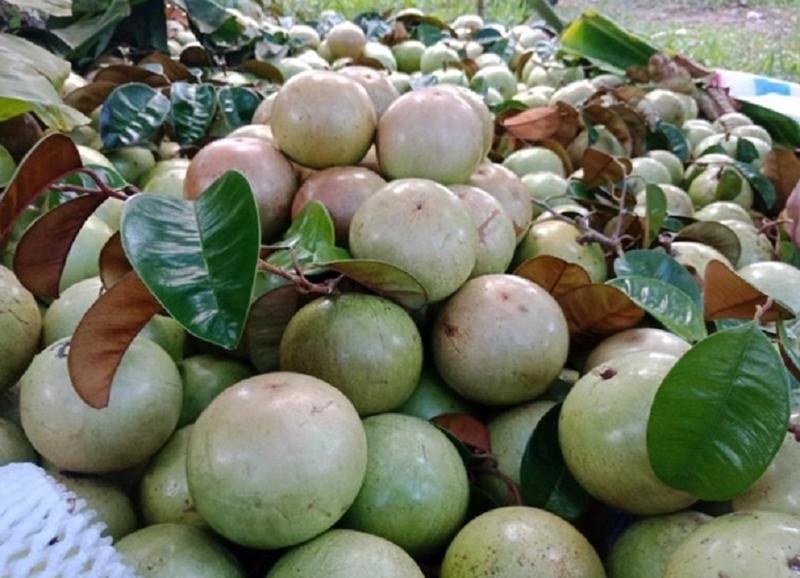Agricultures, Foods, News & Event
United States: Potential market for Vietnamese fruits
As a huge fruit consumption market, the United States still has a lot of room for Vietnamese fruit to expand and develop, especially vegetables, healthy organic foods, and out-of-season fruits. crops, tropical fruits with limited domestic production…

The Vietnam Trade Office in the United States said that with a population of over 330 million people and large consumption power, the United States is a key market for agricultural products and food, including seasonal fruits.
In 2023, the United States will import fresh and frozen vegetables worth about 20 billion USD, mainly berries (4.3 billion USD), avocados (2.98 billion USD), bananas (2.76 billion USD). USD), grapes (2.49 billion USD), citrus fruits (1.89 billion USD), strawberries (1.49 billion USD)…
The main customer group today is the Asian community and especially the growing Vietnamese community, concentrated in urban areas and large cities in the United States.
LONG GEOGRAPHICAL DISTANCE, LIMITED PRESERVATION TECHNOLOGY
Vietnam currently has 8 types of fresh fruits allowed to be imported into the United States including: dragon fruit, mango, longan, lychee, rambutan, star apple, grapefruit, and coconut.
The fruits must be given a planting area code, packing house, must be irradiated, certified by the Ministry of Agriculture (APHIS – Department of Animal and Plant Quarantine) and accompanied by a phytosanitary certificate certifying that they meet the requirements. Meets US phytosanitary requirements.
Fruit imported into the United States is governed by many different regulations and laws, such as: Plant Protection Act, Food Safety Modernization Act, Food Quality Protection Act, Plant Protection and Quarantine Program.
This country requires agricultural and food exporters to register their production facilities and register a representative in the United States to act as a contact point. Every 2 years, foreign businesses exporting food products to the United States will have to re-register the production facility and the representative will be issued a valid business code for the item.
Fruit growing and processing areas must ensure compliance with standards such as: GlobalGAP, environmental certificates, ISO, HACCP, USDA and ensure there are no pesticide residues not registered in the United States, no contaminated with microorganisms, bacteria, mold. The harvesting process must ensure that the quality of the fruit is not affected.
Besides having to meet the above requirements, compared to countries exporting to the United States, especially countries in the Americas, Vietnam’s export products face a number of difficulties and challenges.
Firstly, due to the short harvest time, fresh products spoil quickly. Long geographical distance increases shipping time and costs.
Second, must compete with South American and Asian markets with the same products. While preservation technology is still limited, products undergoing irradiation undergo temperature changes, so their original quality cannot be maintained, and freshness is greatly reduced after the goods arrive at port.
Third, the scale of domestic production is still small, making it difficult to meet the quantity and requirements from importers. Not investing properly in packaging, packaging, design and promotion in the US market.
IMPROVE THE ADDED VALUE OF SEASONAL FRUITS
The Vietnam Trade Office in the United States commented that this is truly a potential market for Vietnamese fruits and vegetables, therefore, growing regions, businesses, and the state need to strengthen solutions to overcome these problems. above difficulty.
Specifically, localities and businesses need to increase the added value of seasonal fruits by adding processed products such as dried fruit, fruit powder, and canned products that can be consumed all year round.
Applying new technology to help prolong fruit preservation time, for example, technology to put fruit into a state of dormancy, preserve living cells, use biological products, wrapping films, and permitted preservatives to prolong fruit life. long fruit lifespan.
Develop a master plan to implement methodically, synchronously, with highlights and persistently the promotion and trade of seasonal fruits, build stories associated with fruits, exploit real images growing areas, organizing booths to introduce products at Vietnamese and Asian markets.
In particular, we invite import businesses to visit growing areas and processing facilities, and promote sister relationships with localities in the United States to serve as a basis for spreading the brand image of Vietnamese products.
Import-export enterprises, in addition to the leading role of large enterprises with experience in exporting fresh fruits, need to encourage, train and coach small and medium-sized enterprises to promote their strengths. actively participates in export. In this group, the role of import businesses in the United States is indispensable, and first of all, overseas Vietnamese businesses help consume goods at Asian market chains and commercial centers.
For logistics units, it is necessary to encourage and support the participation of transportation businesses (airlines, ships) to reduce the cost of transporting seasonal fruits on peak occasions from Vietnam to the United States and other countries. other market.
Encourage logistics businesses to promote the strengths of their infrastructure systems and optimize specialized logistics models for agricultural products for export.
The Vietnam Trade Office in the United States requested the Plant Protection Department (Ministry of Agriculture and Rural Development) to discuss and negotiate with US authorities to allow the application of additional quarantine treatment measures such as Hot steam processing to reduce costs and utilize existing resources and equipment.
Source: https://vneconomy.vn/hoa-ky-thi-truong-tiem-nang-cho-trai-cay-viet-nam.htm

